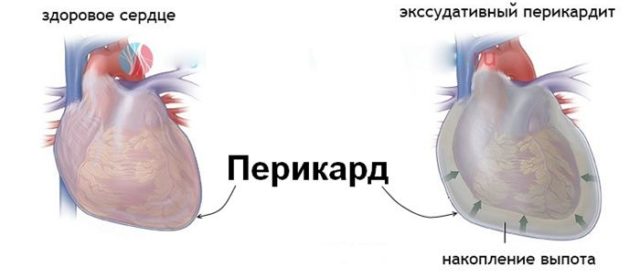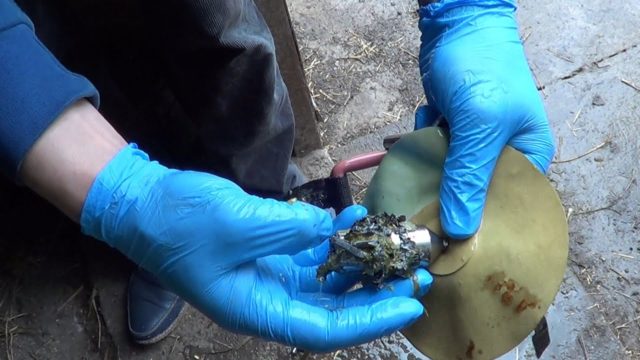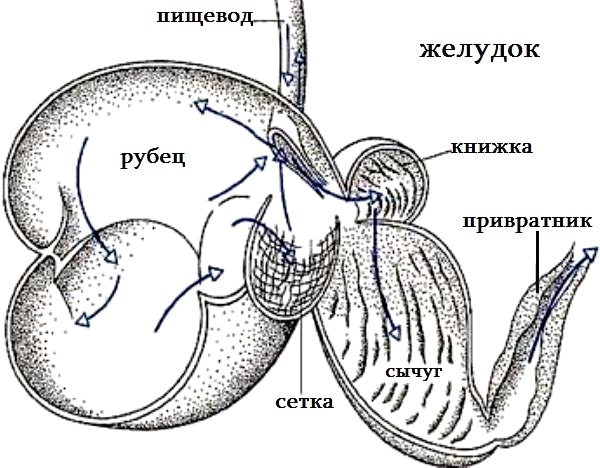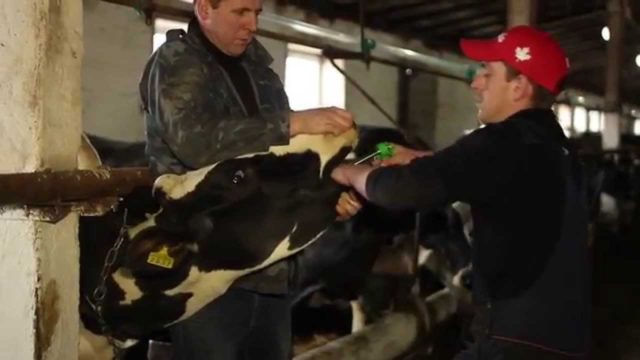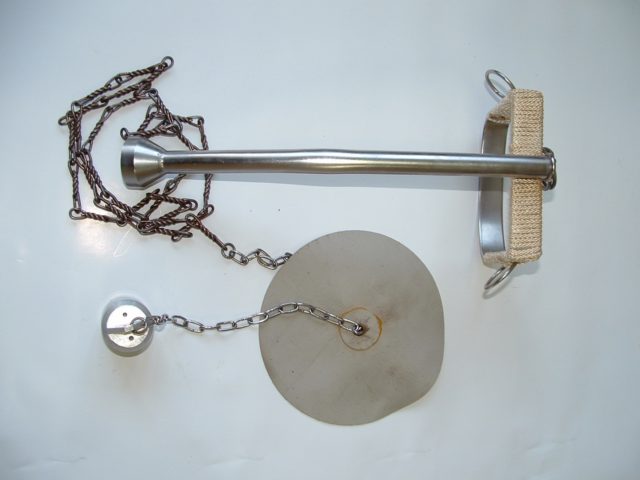Content
Traumatic pericarditis in cows is observed due to the penetration of sharp objects into the chest cavity of the animal from the outside and from the inside, from the esophagus and mesh. Needles, knitting needles, pins, wire can become dangerous. There are also cases of pericarditis in cows with heart injuries due to fractured ribs, injury to the chest cavity.
What is traumatic pericarditis
The pericardium is a kind of cavity that surrounds the heart. It is designed to protect the organ from inflammation and various infections.
Traumatic pericarditis is a complex inflammatory process of the pericardium and adjacent tissues, the visceral and parenteral pericardium. Occurs when injured by foreign objects that can get into the cow's net with feed. Sharp parts of objects pierce the wall of the animal's stomach and move closer to the heart. In this case, the lungs and liver can be affected, but more often the object injures the heart, since blood moves to it. At the same time, pathogenic microflora penetrates into the wound, causing inflammatory processes in the tissues. While developing, the disease disrupts the morphological and functional state of many organs and tissues.
By contracting, the stomach pushes the object further and further. Thus, the myocardium and epicardium (middle and outer cardiac membrane) can be injured. In the course of the movement of a foreign body, the vessels and capillaries are injured, an accumulation of blood forms between the heart and the bag, which increases the pressure on the heart muscle. This causes it to stop.
In addition, as a result of inflammation and irritation, hemorrhage, edema, cell detachment, and fibrin loss occur. In the future, the pericardial cavity is filled with exudate, which also hinders the work of the heart. The amount of discharge can be up to 30-40 liters.
Liquid happens:
- serous;
- purulent;
- serous fibrous;
- hemorrhagic.
Slowing blood flow through the veins, squeezing the lungs causes rapid breathing. The inflammatory process leads to irritation of the nerve endings, which provokes pain in the cow, disruptions in the work of the heart and respiration, and at the same time weakens the functions of the proventricles. Toxins and secreted exudate enter the bloodstream, increasing the body temperature of the animal.
In addition to the causes of traumatic pericarditis, it should be noted that some other factors affect the development of this disease. The main ones are an increase in pressure on the peritoneum. This can be facilitated by:
- childbirth;
- falling of a cow with its belly, chest on the ground;
- a blow to the abdominal region;
- increased appetite, which leads to overfilling of the cow's foreventricles.
Often a factor provoking the development of traumatic pericarditis is a strong physical overstrain of the animal.
Signs of traumatic pericarditis in animals
As a rule, traumatic pericarditis occurs in several forms: acute, subacute, and often becomes chronic. Also, this disease is characterized by a dry and effusion phase. The dry phase begins from the moment the cow is injured and continues until the appearance of fluid in the inflamed areas.
With acute traumatic pericarditis in the dry phase, cows become sore.She avoids sudden movements, can moan, arch her back, stands with her limbs spread wide. During this period of the development of the disease, the cow has a rapid heartbeat, contractions of the heart muscle appear, in which a noise is heard during listening, reminiscent of friction.
Further, the dry phase of traumatic pericarditis passes into the effusion stage of the disease. Previously audible friction changes to a splash, which indicates the presence of liquid. The heartbeat increases, but the soreness, on the contrary, decreases, since the layers of the pericardium are separated by fluid and the inflamed areas do not contact each other.
When pathogenic microorganisms penetrate into the bag together with a foreign object, serous-fibrous inflammation develops, turning into purulent-putrefactive with the appearance of gases. This stage is characterized by deformation of the shirt, filling of a cloudy exudate, which contains purulent-fibrous masses with a putrid odor.
As the exudate builds up, the pressure on the cow's heart increases and it cannot expand to normal volumes. This leads to poor circulation
This is followed by:
- the appearance of shortness of breath in the animal;
- the liver increases in volume;
- persistent tachycardia is noticeable;
- reduced pressure;
- bronchitis develops;
- the mucous membranes of the animal turn blue.
Along with these symptoms, the cow has no appetite, there is a disorder of gum, tympania (swelling of the scar), milk yield drops sharply, and body temperature rises.
At autopsy of cows that died from traumatic pericarditis, exudate is noted in different quantities (30-40 liters). With dry pericarditis, the fluid is fibrous, with the effusion phase - serous, serous-fibrous, hemorrhagic, purulent.
With a serous form of the disease, the integument of the heart is hyperemic, small hemorrhages are visible. With traumatic fibrous pericarditis, there are traces of yellowish fibrous masses on the pericardial sheets. For purulent pericarditis, cloudy fluid accumulations are characteristic. In this case, the leaves of the pericardium are edematous, red, with small hemorrhages with abscesses. Hemorrhagic pericarditis is marked by the accumulation of hemorrhagic fluid in the pericardium. The epicardium and pericardium are edematous, dull in color with punctate hemorrhages.
In the course of movement of a foreign body, fibrous cords, abscesses, fistulas with purulent contents are visible. Sometimes you can find a certain tie between the shirt, diaphragm and mesh. Often, at the puncture site, you can find the foreign object itself, which caused the inflammatory process. It is found in the pericardium or in the myocardium. In some cases, a foreign object is not found during autopsy.
Diagnosis of traumatic pericarditis in cattle
The veterinarian establishes the diagnosis of acute traumatic pericarditis on the basis of pain and noise when listening to the heart region, increased heart beat, tachycardia. The effusion phase of pericarditis is characterized by a displacement and some weakening of the cardiac impulse, and with percussion, deafness of tones, splash, overflow of the jugular veins, and significant swelling are heard. X-rays determine the increase and immobility of the cow's heart, the indistinctness of the diaphragmatic triangle. In difficult situations, the veterinarian conducts a puncture with a needle, which is used for novocaine blockade. The puncture is made on the left, in the middle of the level of the elbow and shoulder joint of the cow, in the fourth intercostal space.
For a correct diagnosis, the veterinarian should exclude dropsy of the shirt, exudative pleurisy. Dry pericarditis and the initial stage of pericardial effusion should be distinguished from pleurisy and acute myocarditis and endocarditis. An experienced specialist knows that dropsy proceeds without pain in the region of the heart and an increase in body temperature. In pleurisy, rubbing sounds may coincide with breathing during auscultation.
Treatment of traumatic pericarditis in cattle
Conservative treatment of traumatic pericarditis in cows, as a rule, does not bring the desired effect, more often animals are sent for slaughter. However, sometimes attempts to treat a cow have been successful.
As first aid, the animal must be at rest, transferred to a separate stall. To prevent the development of the inflammatory process, you need to apply ice to the heart area. All large feeds are removed from the diet, replacing them with fresh grass, hay, liquid mixtures with bran. If the cow refuses food, artificial feeding can be prescribed.
Further, medical measures should be as follows:
- restoration of heart functions;
- elimination of inflammatory processes;
- removal of fluid from the pericardial cavity.
After fixing the ice bag, a glucose solution is injected intravenously.
After carrying out all the necessary therapeutic actions that have not brought a positive result, the cow is sent to slaughter. Sometimes they resort to surgery to remove a foreign object from the animal's body.
Forecast and prevention
The prognosis for traumatic pericarditis in cows is generally poor. Most often, animals are culled from the herd. Pericarditis caused by injuries to the chest area, such as puncture wounds, fractured ribs, can be treated well.
Preventive measures for traumatic pericarditis are to prevent foreign objects from entering the feed and to ensure safe conditions for keeping cows on the farm. The main preventive measures are to fulfill the following conditions:
- Hay packs should be unsealed in a specially designated area to prevent wire fragments from getting into the food of the cows.
- If the chain is damaged, it must be replaced with a new one.
- Loose feed should be carefully checked for metal objects before serving to cows. For this, there is electromagnetic equipment.
- In frequent cases of traumatic pericarditis in the herd, it is necessary to check all cows with a special probe. This will allow a foreign object to be removed from the cow's digestive organs in time.
- Vitamins and microelements must be added to the feed. This will prevent the cows from swallowing foreign objects. With their lack, metabolic disorders develop and the cow begins to "lick" - she constantly licks the walls, the ground, swallowing foreign objects.
- The cow should not be allowed to walk near roads or in the area of landfills and construction sites.
Conclusion
Traumatic pericarditis in cows significantly reduces productivity, often leading to the death of cattle. Such a disease does not respond well to conservative treatment, so it is important to take preventive measures in a timely manner. They will reduce the risk of traumatic pericarditis in animals.
